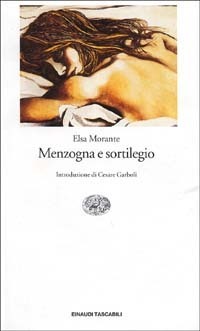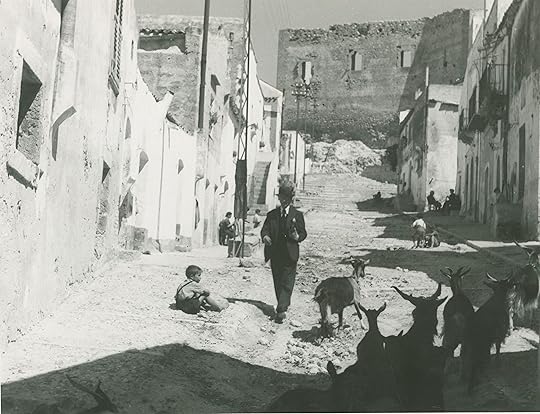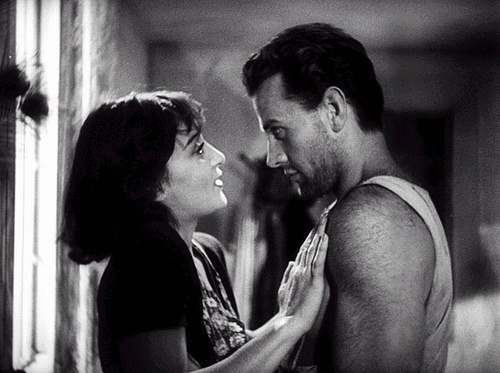What do you think?
Rate this book


723 pages, Paperback
First published January 1, 1948
I see only my own face, reflected in the apartment’s many mirrors.
While I aimlessly float about these rooms, my reflection sometimes sneaks up on me. I jump when I catch sight of a shape drifting through these gloomy, lonely waters, and then, recognizing myself, I freeze and stare at my image as if I were confronted by a venomous medusa.
She grew up lazy, ignorant, uncivilized, and a worshipper of solitude. Yet her manners were neither crude nor awkward, but on the contrary, graceful and proud. Her reserved countenance, with her dreamy yet intense eyes, and her slightly swollen lips always in a pout, preserved that expression of bright innocence that is usually lost by the end of childhood, contrasting with her no longer childish figure, one of a delicate and nearly ripened woman.
Anna became enmeshed in this metamorphosis, in this new and delirious feeling that we sometimes feel in dreams. As soon as our self-consciousness is gone and the boundaries between species muddled, we descend back into ancient and barbaric territories in which we seem to exchange ourselves with the savage creatures we envy when awake – foxes, goats, cats, or wolfhounds.
He boasted of his own merits, still unrecognized in the world, which were, in his mind, sparkling achievements. Like flames that attract winged creatures, he ignited promises, ambitions, and proposals that would make the heir to a throne envious…
I stared at her in amazement, judging her to be a person of the highest rank. Slender at the waist, and curvy at the hips and bust, she was more imposing than an archbishop. The fabrics that were wrapped and draped around her seemed more appropriate to ceremonial wear than to a woman’s outfit. She was covered in necklaces, bracelets, pendants, and rings of every shape and size, and I was sorry that her lively movements kept me from studying those ingenious ornaments one by one.



'הגורל הנחשק, ששמו תיאודורו מָאסְיָה, לא איחר לחפש את המפוטרת היפה בכתובתה החדשה. הוא התחיל לחזר אחריה במרץ, ושלח לה מכתבים לוהטים עד מאוד, שהסעירו, עם זאת, את לבה הקר של הנמענת בעיקר משום שנכתבו על נייר שהתנוסס עליו סמל המשפחה.' ע.43
'כשהיא עברה בין עקרות הבית, היו כאלה שנפנו לצד אחר, והיו שסקרו אותה במופגן מכף רגל ועד ראש, והיתה גם מי שאגב מלמול חבטה במרפקה בשכנתה. כל זה הלהיב את רוחה של אנה והבעיר בה ביתר שאת את תהילתה. היא עברה כמעט מעופפת, וקרנה בעיניים עליזות: "תישארו איפה שאתם -היה נדמה שהיא אומרת עלובים עצובים שכמותכם. מה שיש לי, אתם לעולם לא תכירו".' ע.140
'אהבתו העזה לדודנית נראתה לו, משחזר להרהר בה, כמו אי־אילו מקומות שגרנו בהם בילדותנו וחשבנו שהם רחבים עד אין קץ: אבל כשאנחנו חוזרים אליהם בבגרותנו, הם מתגלים לנו צרים, ואנו שואלים איפוא את עצמנו בהשתאות: "זה כל מה שזה?" כמו דברים רבים אחרים, האהבה הזאת היתה שייכת לעידן אחר: שדחה אותו.' ע.195
'הבית שלנו נפל לידיים של הנשים, והנשים מקלקלות הכל, הן מרוקנות מכל דמיון, ונהנות רק לחטט בגינות ירקות ובחצרות, ובגנים הן לא מבינות כלום. תראה את הדת שלהן: קמות בוקר בוקר ורצות מהר מהר להפקיד בכנסייה תפילות "אוה מאריה", נדרים, כריעות ברך, סיגופים, כמו שמפקידים כסף בבנק. וככה הן סומכות שיחסכו הון של אושר, שעליו יוכלו לחיות בגן עדן לנצח נצחים: הן לא מסוגלות לתפוס מושג אחר.' ע.200
'כמו כן, היא לא כרכה לראשה את המטפחת הצבעונית כמנהגה בכפר: ראשה היה גלוי. הראש הזקוף הזה, בעל התווים הגרומים והקשים למדי, העלה על הדעת עוף דורס; אך בגלל הליכתה החיננית היא דמתה יותר לברבור.' ע.227
'בדם ניצת נפנתה בלהט לכיוון אותו חלון גבוה וצחקה בתורה מול אויבותיה בצחוק שנשמע כהד של האחר. היא עוד המשיכה לצחוק, ופניה עוד היו מעוותות בלעג ובכעס, כשהכרכרה כבר הסתובבה בסמטה, מחוץ לשדה הראייה של הכיכר הקטנה. - אנה! קרא פרנצ'סקו בקול מבוהל; אבל היא לא שמה לב אליו, ונעצה את עיניה הבוערות והעיקשות בחלל הריק, כאילו אינה מזהה את שמה. וזו היתה פרידתה של אנה מבית נעוריה וילדותה.' ע.378
'היה לה עור רענן ומנומש; אבל האדומים הטבעיים של לחייה טושטשו באבקת פודרה, וארגמן מזויף הצית את פיה הצבוע. והעיניים, העליזות והאנושיות מטבען, נראו בתוך הצבע החום אדמדם המופרז כשני אורות אחוזי דיבוק והפקרות. כמו כן, התמרוקים והקרמים הרבים נמרחו על פניה לא בכישרון, אלא להיפך, במריחות גסות ולא מיומנות: כאילו היא נהנית להתחפש ולאו דווקא להתייפות.' ע.410
'אף שמעולם לא הייתי במקום שהוליכה אותי אליו, קלטתי עוד לפני שהגענו - לפי חנויות הפסלונים והפרחים, שהציגו את מרכולתם לאורך הדרך, ולפי חוות האנשים שהלכו איתנו בדרך - שאנו בדרכנו אל בית העלמין. ידעתי שאמי שונאת את המקום הזה; וידעתי שהסבתא המסכנה, כמו גם סבי האחר, תיאודורו, לא זכו שמישהו יבקר אותם שם מיום שנקברו. אבל אם אמי באה לכאן היום זה בוודאי כדי לבקר את האלמוני הזה דון אדוארדו, שאתמול שמענו את הבשורה על מותו.' ע. 483
' אהה, כשהייתי נערה, רציתי לאבד את הכבוד שלי בשבילו, כל כך אהבתי אותו, אבל הוא לא רצה אותי. חיפשתי אבדון כאילו זה ניצחון, והוא לא רצה אותי. היום אני יודעת, אני מבינה למה השאיר אותי תמימה: כדי שהנשמה שלי תהיה שווה יותר. ועכשיו, תקשיבי, את עדה, ילדונת, אני מוכרת את נשמתי לגיהינום, ובתמורה אני רוצה שיעירו אותי מהחלום הזה, אני רוצה למצוא שוב את אדוארדו!' ע.485
'אני, ענתה אמי בבוז, לא רוצה לא את האהבה שלכם ולא את הכבוד שלכם. אני רוצה להיות החרפה שלכם. וכשאמרה כך פרצה שוב בצחוק פוגע ונועז, שבכל זאת ניתן לקלוט בו, כרעד קל, את הדאגה שלא נמוגה לסודה היקר.' ע.564
'אם תיתני אפילו למלה אחת מכל מה שאת יודעת על שנינו לצ��ת מפיך, הוא יבוא וייקח אותך, ואת, ואבא שלך, וכל משפחת דה סלבי, תשקעו מתחת לאדמה, למטה למטה, במקום שיש רק חושך, ואף אחד לא ישמע את הצעקות שלכם.' ע.567